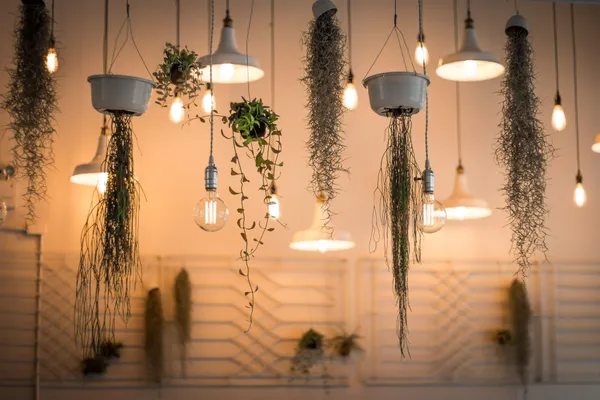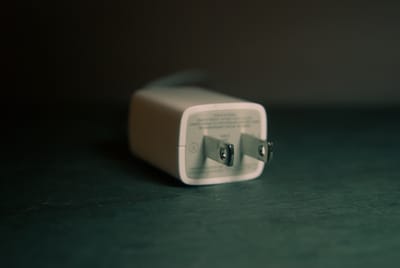When it comes to automating lights, you generally have two main ways of doing it:
- Replacing switches with smart switches. This method is always recommended. In fact, unless you're renting or want colour changing bulbs, replacing switches will be the cheapest and most guest-friendly way of automating your lights.
- Replacing bulbs/globes with 'smart bulbs', such as Philips Hue or LIFX. These require switches to always be left on, but give the advantage of offering colour changing varieties.
If you're a renter like me, replacing switches is generally not an option. You don't want to replace switches, and in some places (like Australia) pay an electrician to do this work, only to have to put them back in when you leave and then repeat at your next home.
Today I'm going to list and compare some of the top smart lighting options for renters.
The Options at a Glance / TL;DR
In case you're time poor and don't want to read everything, here's a table comparing each brand.
| Brand | Protocol | Hub/Controller Required | Bulb Options |
|---|---|---|---|
| Philips Hue | Zigbee Light Link | ✅ | B22, BR30, E27, GU10 |
| LIFX | WiFi | ❌ | B22, E27, GU10 |
| Lightify / Sylvania | Zigbee* | ✅ | B22, BR30, E27, GU10, MR16 |
| Yeelight | WiFi | ❌ | E27 |
| IKEA Tradfri | Zigbee Light Link^ | ✅ | E12, E26, GU10 |
| LimitlessLED | RF | ✅ | B22, E26, E27, GU10, MR16 |
| Z-wave | Z-wave | ✅ | BR30, E27 |
* Some Lightify/Sylvania bulbs can be linked with a Philips Hue Bridge, but unfortunately not all. Some newer bulbs like the MR16 globes are only compatible with the Lightify Gateway.
^ These bulbs can be linked to a Philips Hue hub, as they use a standard communication protocol called Zigbee Light Link. However not all Hue functionality may be available when linking another manufacturers bulb to a Philips Hue Bridge.
See the products I use in my smart home
Philips Hue
Probably the most recognisable brand when it comes to smart bulbs. Philips Hue really defined the smart bulb market, inspiring other big players like LIFX and Ikea to enter the space.
Philips Hue is great for renters. The ecosystem works with a variety of other systems, including home automation controllers, universal remote controls, smart speakers etc. Chances are you're far more likely to find a service or app that works with Philips Hue over any other brand here.
The Hue ecosystem also extends to switches and motion sensors. Meaning you can easily tape over any physical switches to always keep the smart bulbs on, then add a Philips Hue Dimmer switch, or the battery-less Phillips Hue Tap. Having the option of physical switches can be great for a smart home that might be used by guests, or less tech-savvy family members.
The Philips Hue range includes various bulb sizes, from the standard E27 bulb to the GU10 downlights and LED strips.
Speaking of colours and bulbs, one of my favourite things about Philips Hue is its accent lighting offerings. Mainly in the form of Lightstrips and also the Hue Bloom. These are great to throw different colours around a room, especially for renters where it is hard to paint or change curtains.
Philips Hue uses Zigbee Light Link, a wireless protocol to communicate with each bulb. This requires a hub called the Philips Hue bridge which plugs into your home network router via Ethernet.
Unfortunately Philips Hue isn't cheap. So you'll want to start small and work your way up. Each Philips Hue bridge is capable of controlling fifty light bulbs. If price is a concern, or you don't care about colour changing bulbs then there is also the Philips Hue White Ambiance variety, which only do certain shades of white.
LIFX
LIFX bulbs are WiFi based smart globes. Originally a Kickstarter project, they've become the second best known brand for smart bulbs. You're more likely to find an integration or service that works with LIFX or Philips Hue, over any other smart bulb on this list.
The main appeal for LIFX bulbs are that you don't need any additional hub or device plugged into your router to work. Each bulb connects directly to your WiFi network. This is entirely up-to your personal preference. If you have a cheap router and end up adding many devices to your network, you may start to see network performance issues. The last thing you want is for Netflix to be buffering because you own too many smart bulbs. A good router of course would remove that worry, and I personally had to upgrade my own router, even without LIFX bulbs.
LIFX bulbs were also considered to be more colour accurate that Philips Hue. With Philips Hue generation 3 bulbs, I'm not sure if this applies anymore, but would probably come down to personal preference once again.
LIFX bulbs come in the standard E27 lamp bulb, and also have GU10 downlights and LED strips available.
Osram Lightify/Sylvania
Osram Lightify is a cheaper Zigbee based smart bulb. Osram have had a few issues with their Lightify range, with many complaints about their Wifi Gateway. They've also started to re-brand the range from Lightify to Sylvania.
The rebrand has caused a bit of confusion. I have a Lightify E27 bulb I purchased locally from a hardware store. I was able to easily link this with my Philips Hue bridge. However, I also purchased their new Smart MR16 downlights and imported them from Amazon US (they're not sold in Australia). Those bulbs were not able to be synced with the Philips Hue bridge, and further investigation leads me to believe these bulbs don't use the Zigbee Light Link protocol. So, it may be hit and miss whether you can link all Osram bulbs with a Hue Bridge.
Osram has its own Bridge, which connects to your WiFi network as opposed to Philips which connects over Ethernet to your router. I've heard nothing but bad experiences with the Lightify bridge, at least the ones available on sale in Australia at Bunnings. Although my own experience buying a Lightify bridge has been smooth. The only downside is the QR code to scan for the bridge in on the plug side of the Gateway. You'll need to have the bridge unplugged to scan the QR code, which seems a bit clunky (especially when you type your Wifi password wrong).
If you have a Hue bridge and want to save some money on buying a lot of globes, then buying some Lightify bulbs and linking them to a Hue Bridge might be a good best of both worlds option (assuming they're compatible). In my opinion the Lightify bulbs aren't anywhere near the quality or colour accuracy of the Philips Hue generation 1 bulbs.
Xiaomi
Xiaomi as part of their smart home range also have a range of smart bulbs which work with their Xiaomi Gateway. You can then control these lights through the Mi Home smartphone app.
Xiaomi also sell various sensors including motion sensors and door/window sensors which can then turn lights off and on.
There's also support for Xiaomi in some home automation controllers, with Home Assistant being one of them.
A big selling point for Xiaomi is the cheap prices of not only the globes, but other items such as sensors as switches.
IKEA Tradfri
Last stop for Zigbee today is the new smart bulbs from IKEA (yes the furniture store). These smart bulbs can also be linked to a Philips Hue bridge. There's also a Tradfri bridge you can buy, which will also work with other Tradfri products.
IKEA has also launched a range of switches to compliment the range. However at this time I don't believe the switches will work across Philips Hue lights.
The cheap price point has made them popular with the open source community, with Home Assistant already natively supporting them.
Tradfri globes are available in Europe and the US, with other countries like Australia set to see them sometime in 2018.
Together with Rohan Karamandi, hear me break down the latest Home Assistant release and talk with other users of Home Assistant across the open-source community.
LimitlessLED
LimitlessLED (or MiLight depending where you are) is a great alternative for smart lights. They use their own RF protocol, so you'll need some of their WiFi bridges.
LimitlessLED offers many types of bulbs, which renters may find useful. They have all the usual suspects like E27 lamp bulbs and GU10 Downlights, but are also the only other variety in this list to offer the illusive 12v MR16 smart downlight.
There's also a range of remote controls you can use with these lights.
One big advantage of LimitlessLED is their cheap LED strip light controllers. Let's say you want to put some LED strip lights in a cabinet. With Philips Hue and Lifx a strip light can be rather expensive. With LimitlessLED you can purchase one of their LED strip controllers for less than US$20, and some cheap LED strip lights, saving you a lot of money.
There are some disadvantages when it comes to these lights though. There's no ability for your home automation software to know if your lights are on or off, as there's no two way communication. If you use a remote to turn a light on, your home automation system won't see that light turning on.
Another thing to watch out for is the old "you get what you pay for". I've found that the MR16 downlights can easily burn out, and flicker (or not turn on at all) in some downlight transformers. Upgrading these to a Sylvania Smart+ MR16 globes seems to have much better results than both the newer and older version of the LimitlessLED MR16's.
A warning sign though for these bulbs, is that the LimitlessLED website seems to have disappeared. In early 2018 the website was low on stock of their bulbs, so it appears at least one brand of these cheap RF globes has gone out of business.
Zwave
Zwave is a home automation protocol. Each region has its own frequency, so you'll need to source your gear locally. You'll also need a Zwave controller, such as a Vera or Zstick running something like Home Assistant.
Assuming you've got a controller, there are some Zwave controllable lights such as some E27 globes or this new LED lightstrip from Aeotec. There's also an RGBW LED controller from Fibaro, which is the same as the LimitlessLED, except it works on Zwave.
However the price when it comes to Zwave gear isn't cheap. The prices are comparable and sometimes more expensive than Philips Hue. Then there's controller and light compatibility, where some controllers may not support all the features or brand of light globe you've got. For this reason I personally tend to avoid Zwave lights and bulbs.
One advantage to Zwave bulbs is you can have them directly associated with a Zwave scene controller, such as the Aeotec Wallmote. You can also have them directly associated, so if your home automation controller goes offline, your switches will still work.
Smart Plugs
If you've got a floor lamp that plugs into a wall, you can easily automate it by plugging in a timer. You can pick one up from your local hardware store, or even the electrical section of your supermarket. These have been around for years and allow you to time when to turn the appliance on and off.
The smart home version of these now allow two way communication and energy use monitoring between a hub or controller. I'm going to do a separate blog post just for these, as there's many options. If you don't want to miss that, consider signing up for email updates.
Special Mentions
There's plenty of other options for renters as well. The following are some brands/products which I know exist thanks to their integrations with Home Assistant, but I personally have no experience with.
Wrapping Up
When it comes to renting, you may not have a choice when it comes to which light bulbs you need. With different types of bulb sizes, you may be forced to use one brand over the other. Hopefully this list gives you some places to find them.
Philips Hue is the most supported light bulb out there, and if you can afford them I would suggest you start with them. You can save some money if you don't need colour changing globes. Otherwise the new IKEA Tradfri globes look very promising and very affordable.









